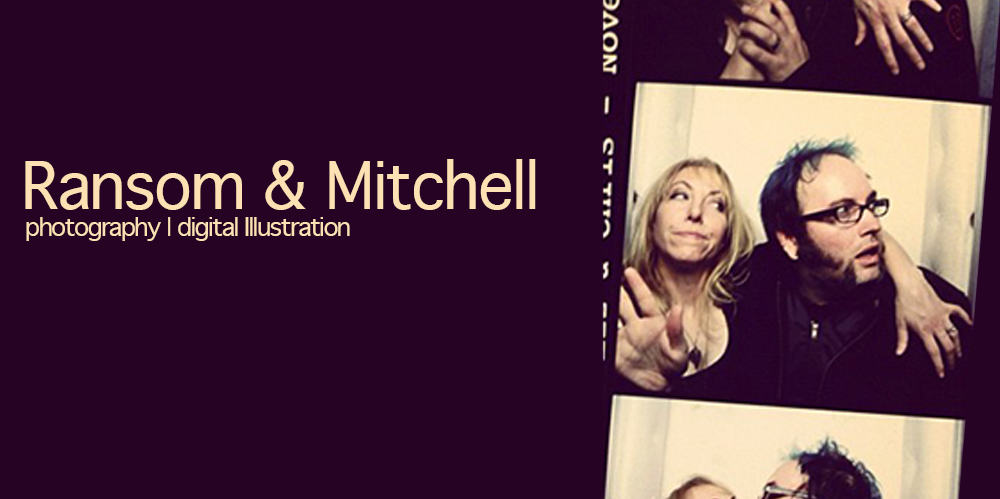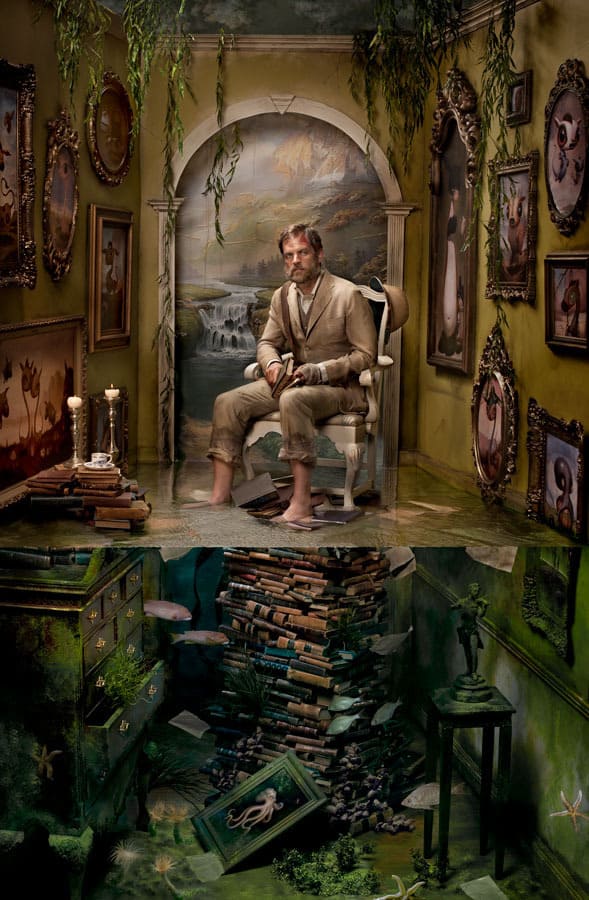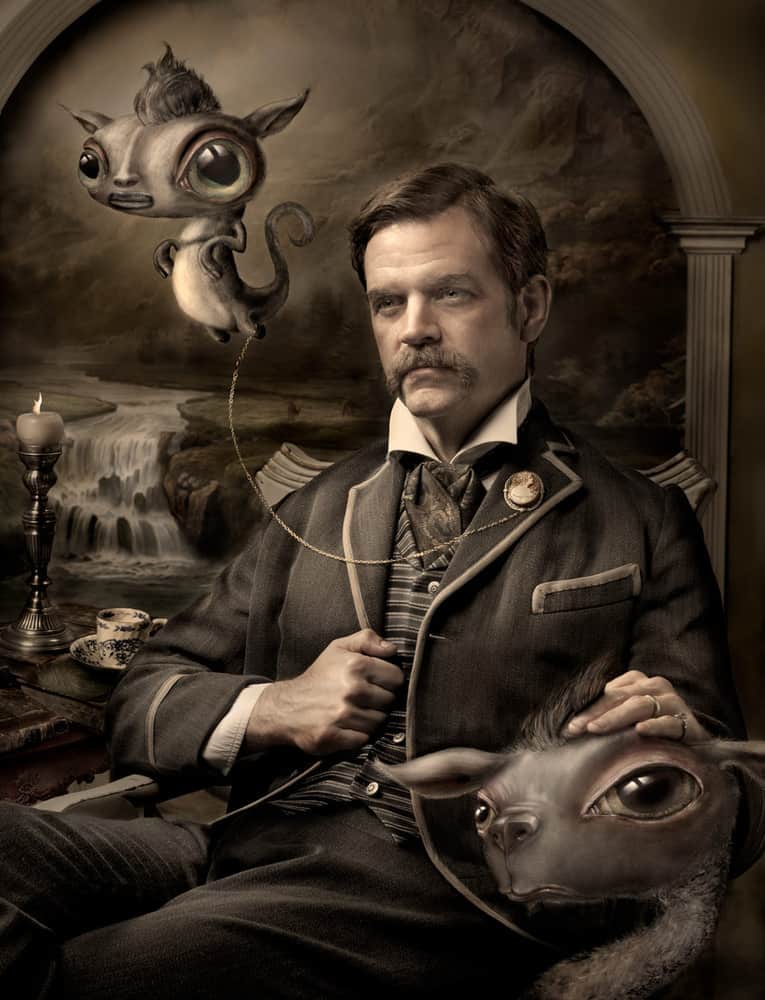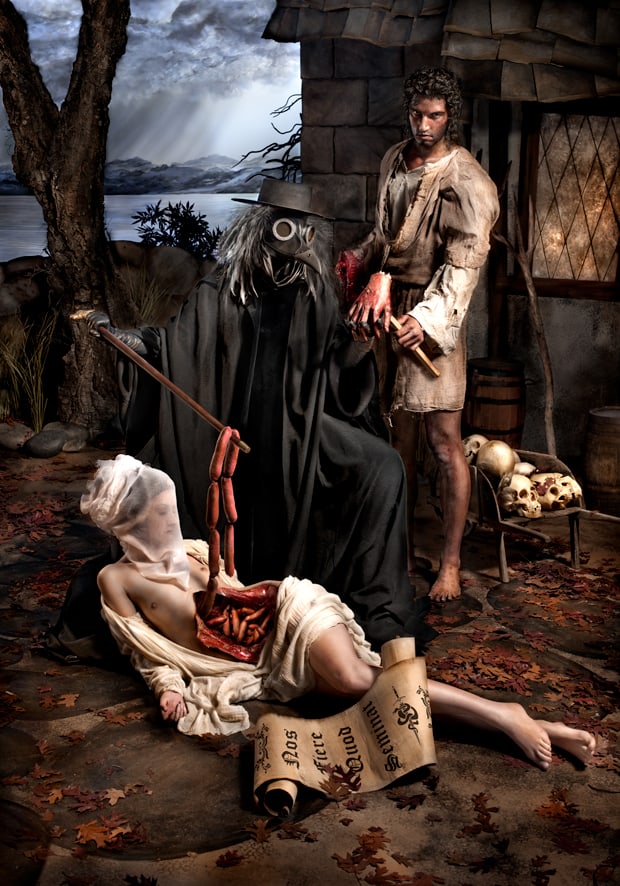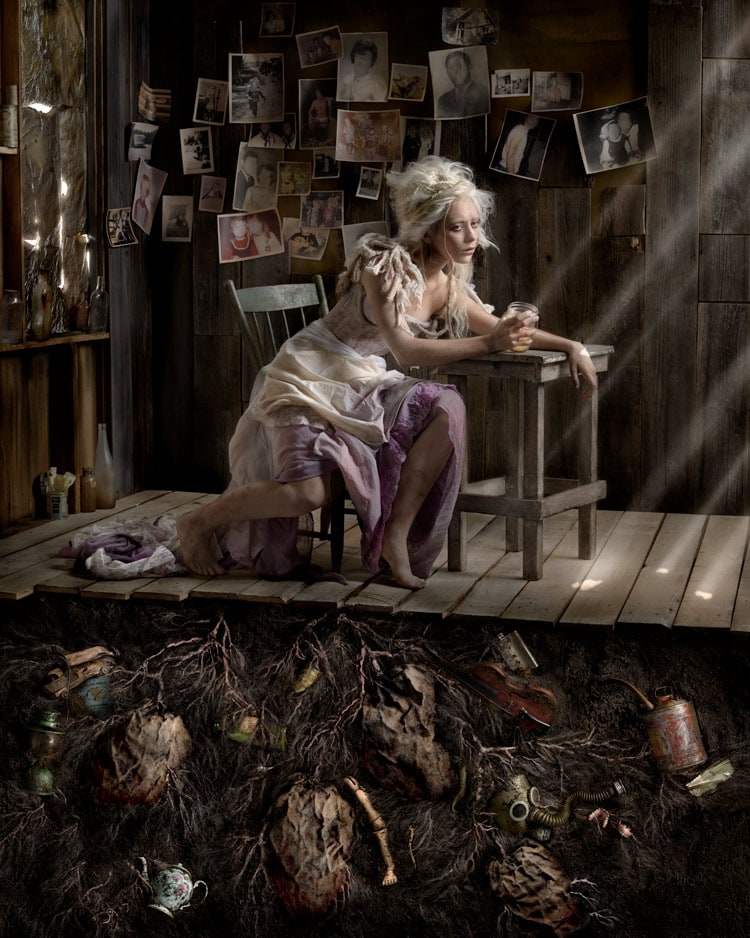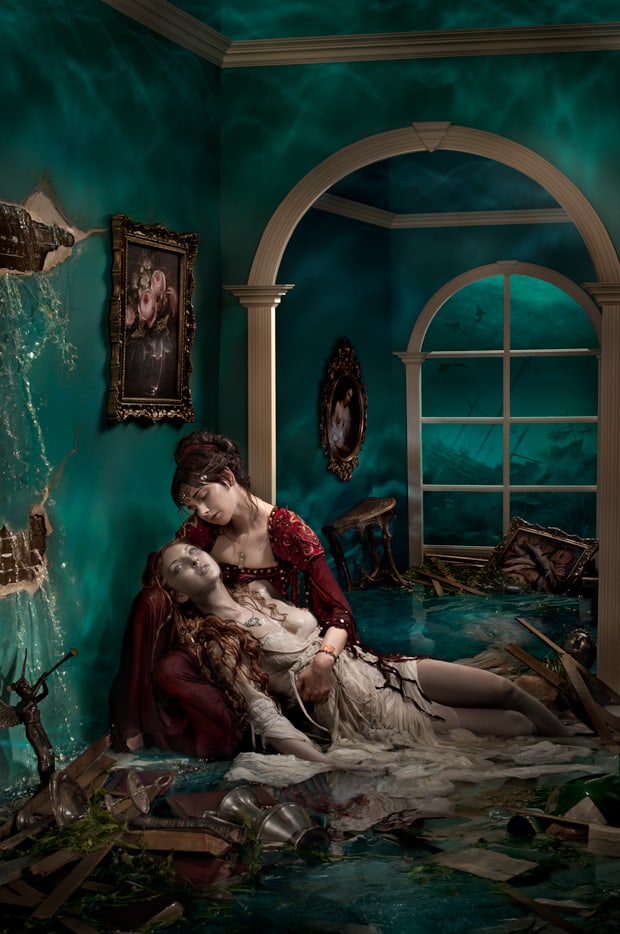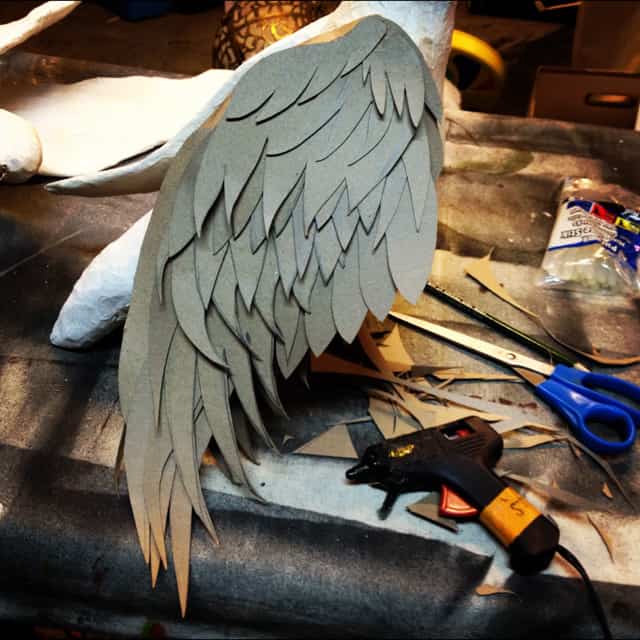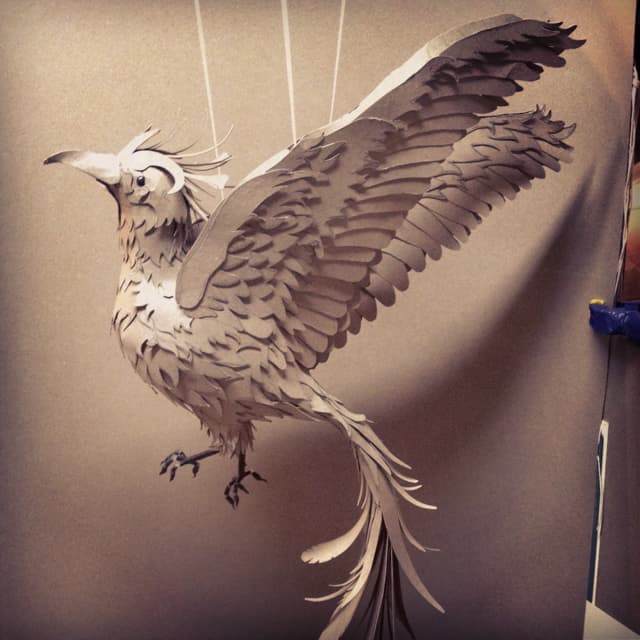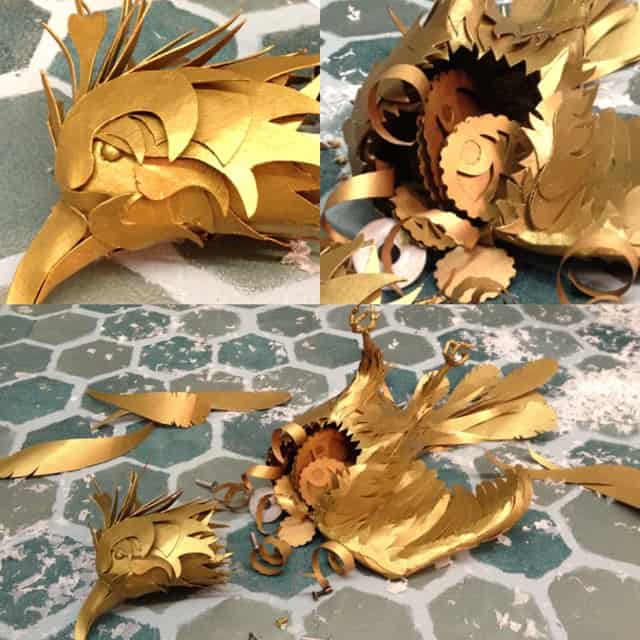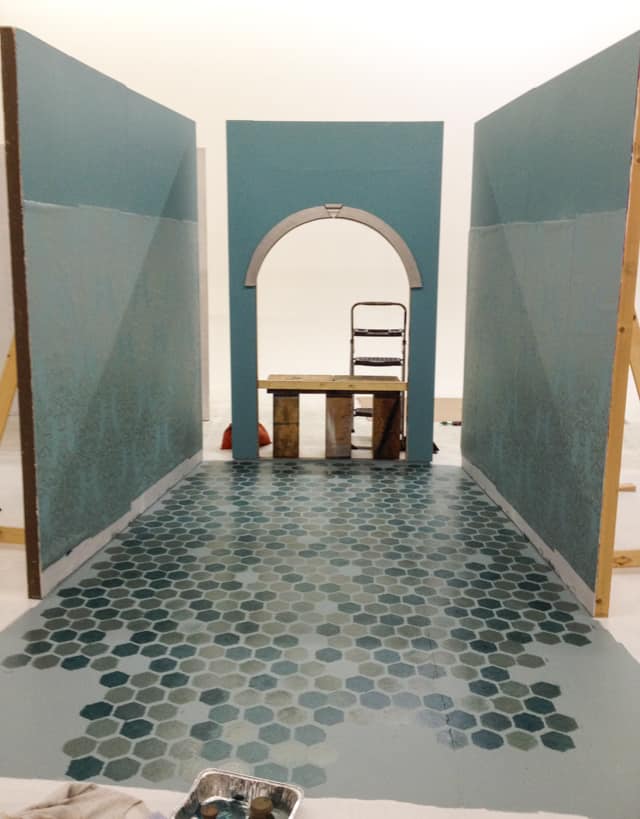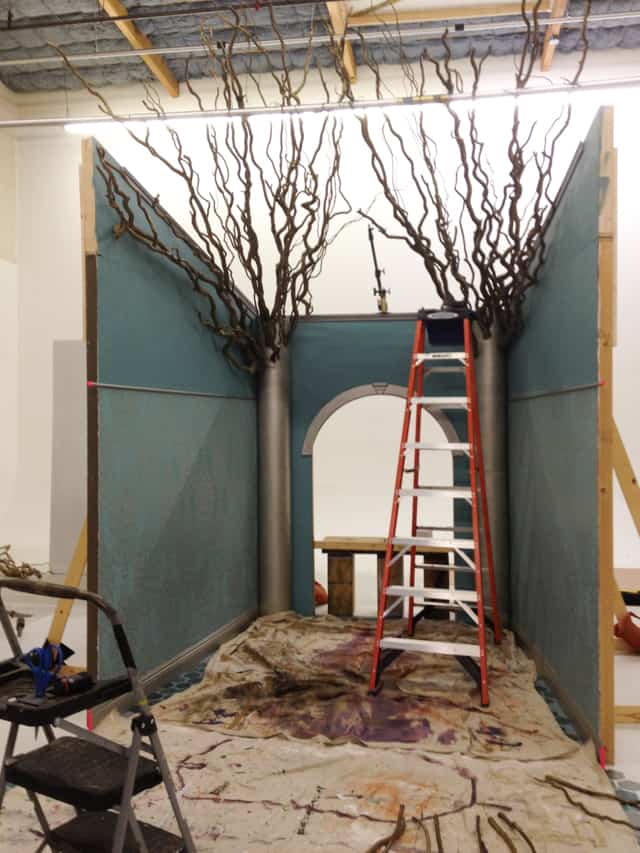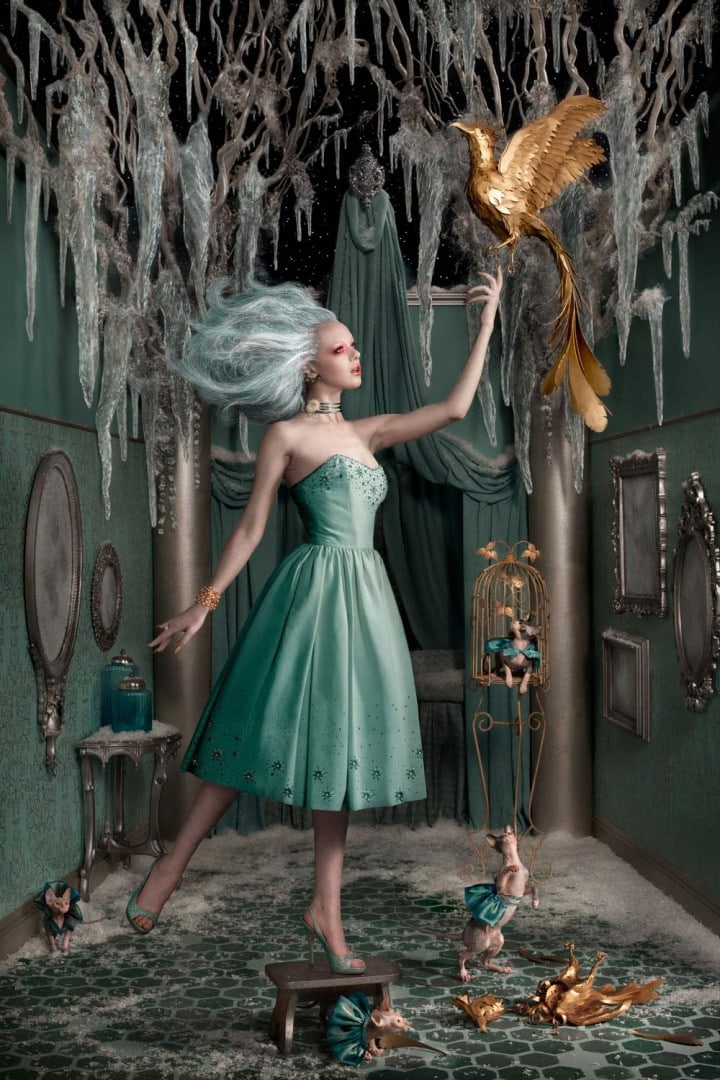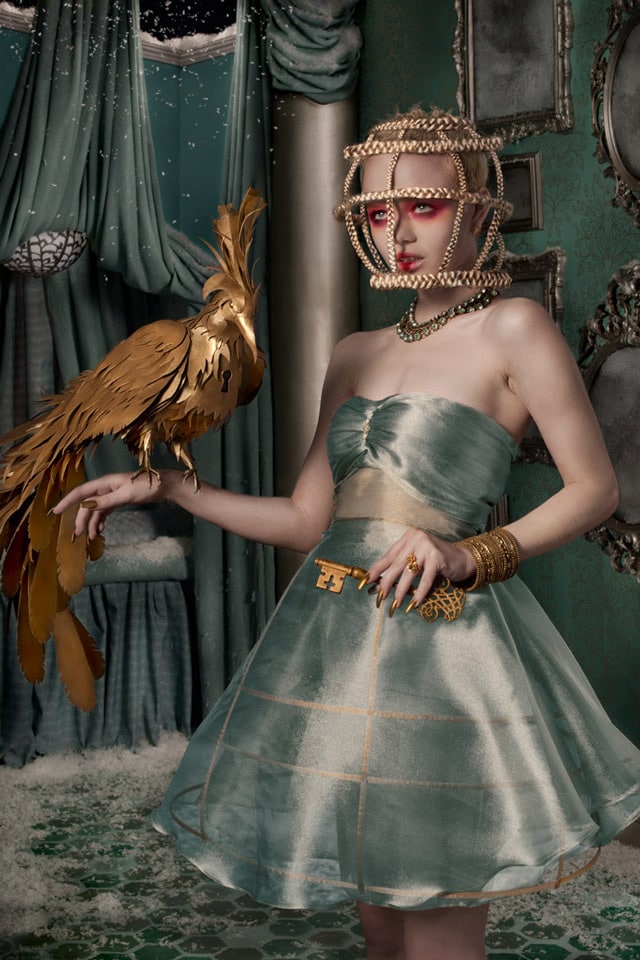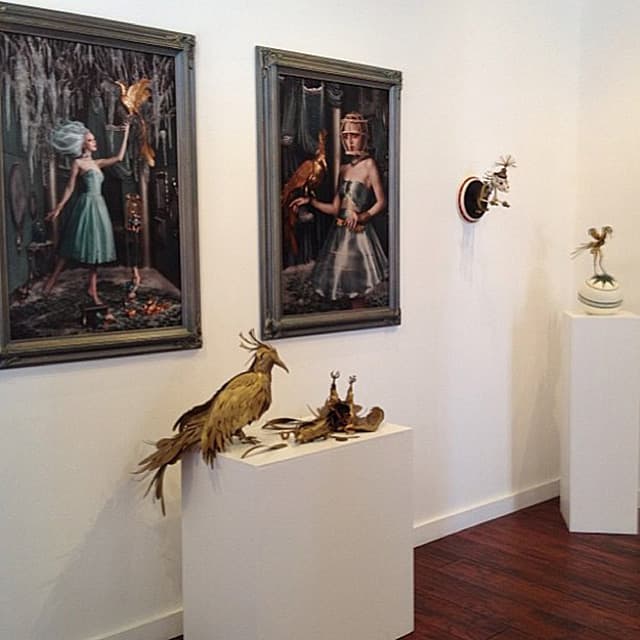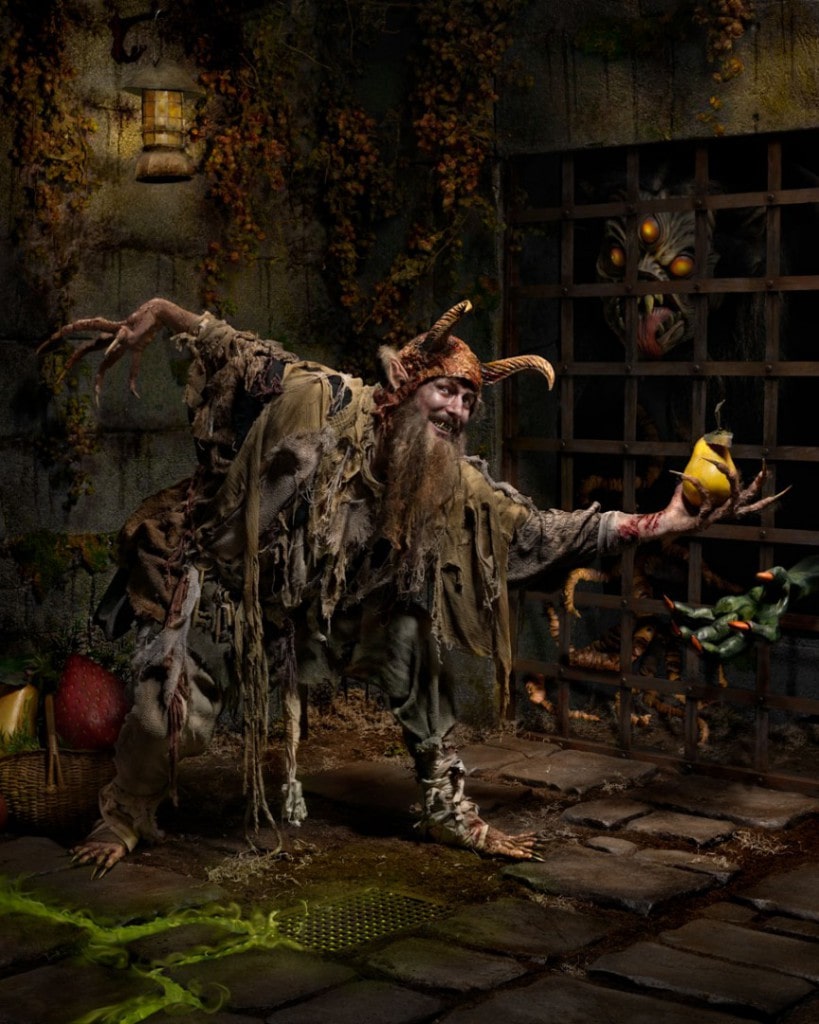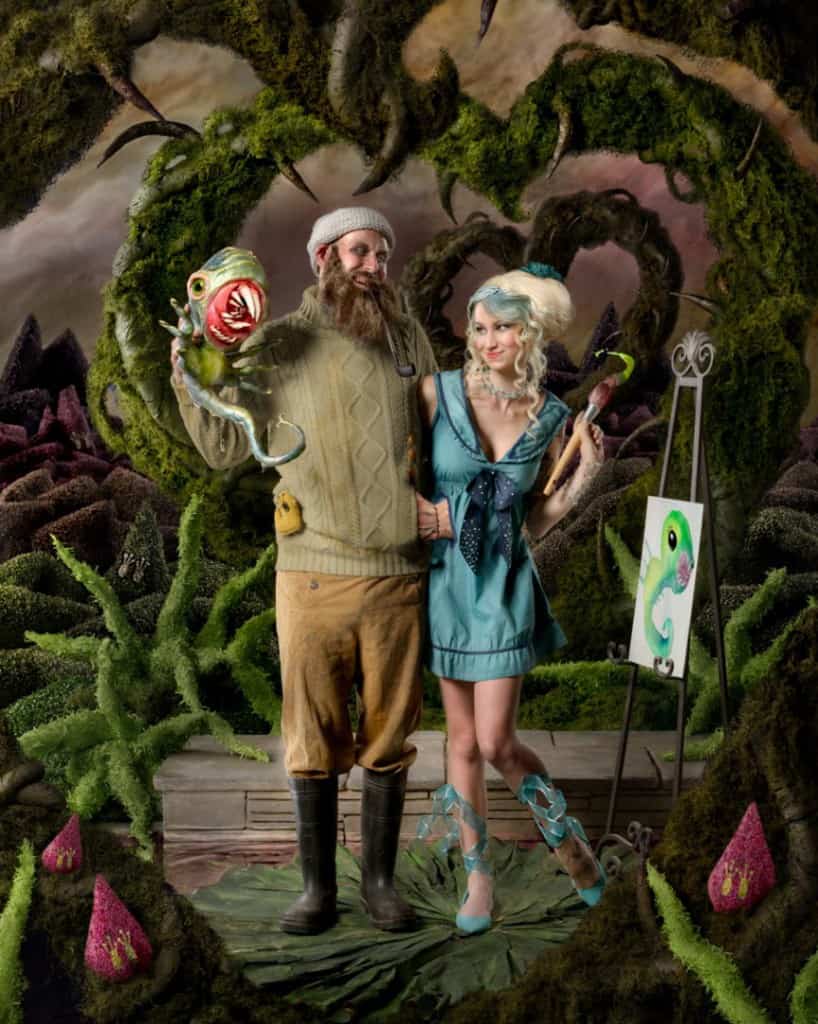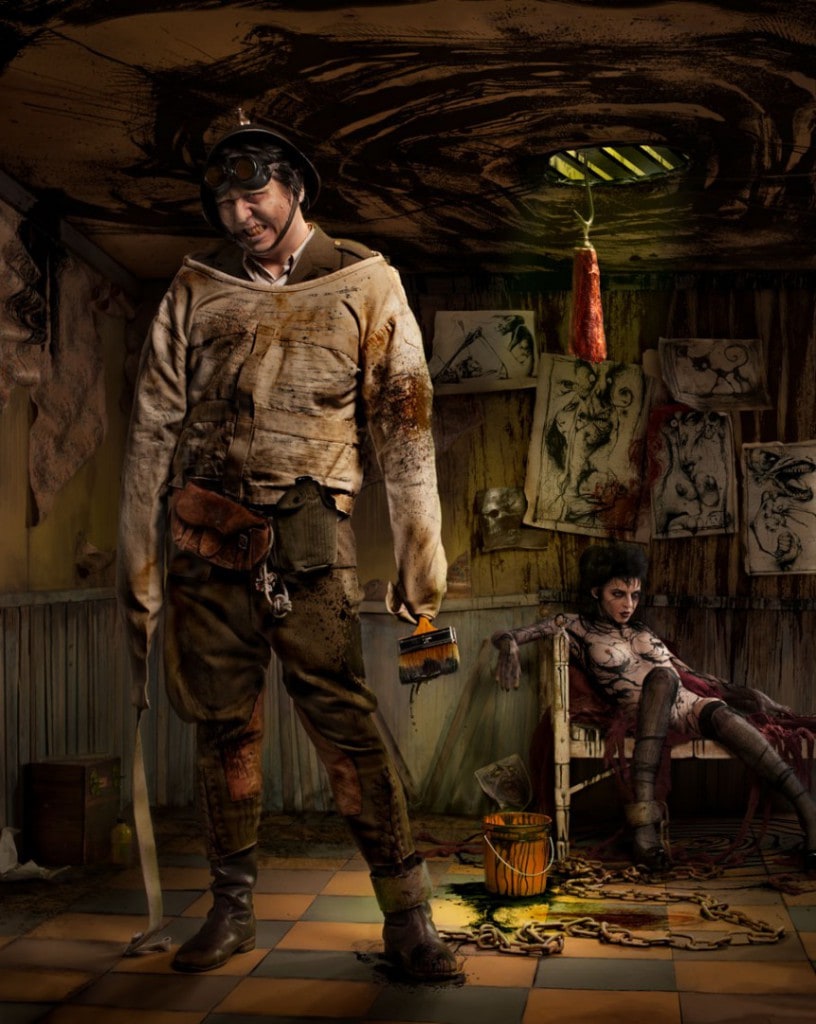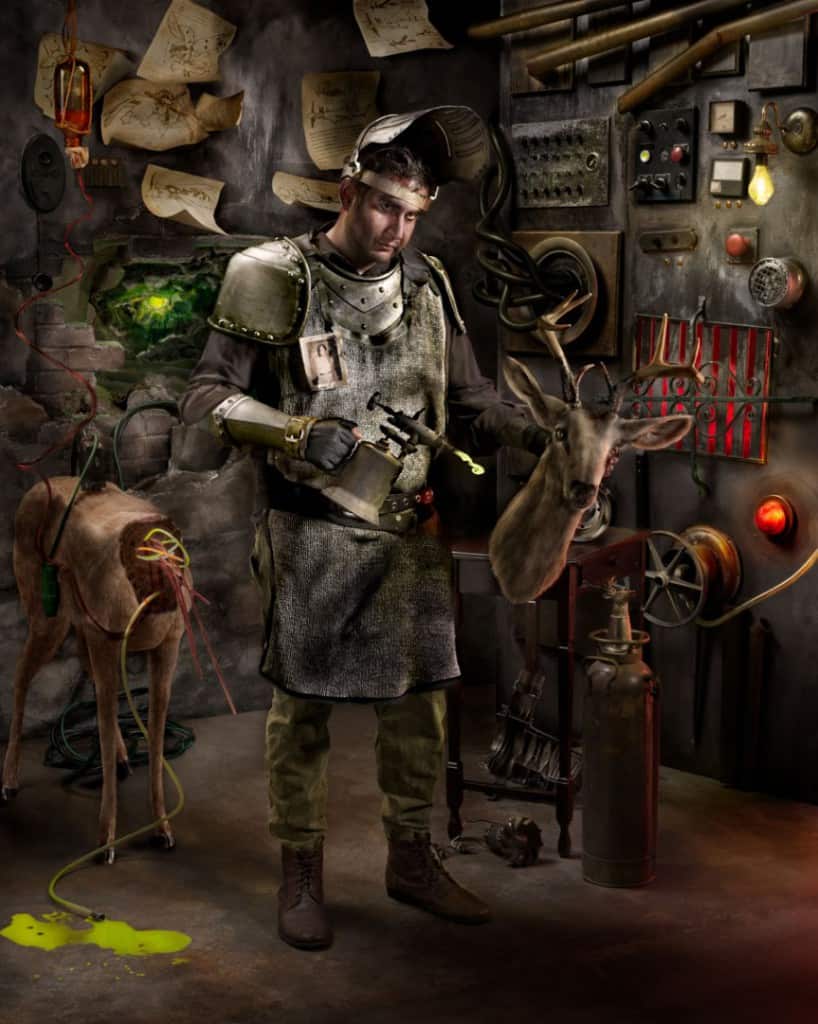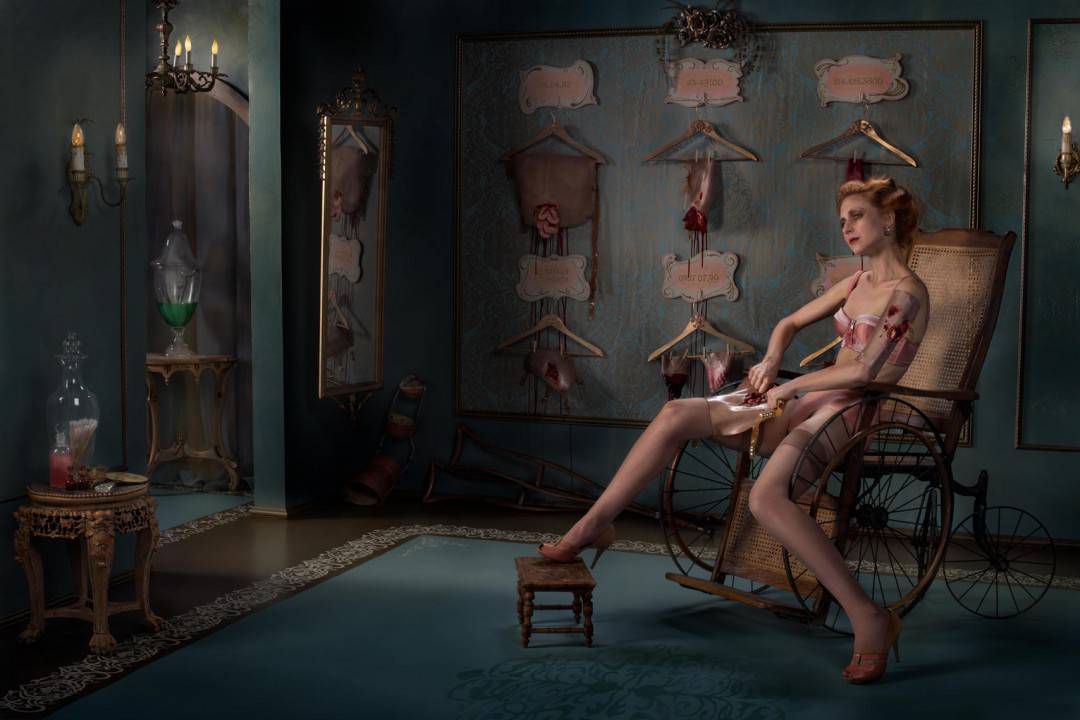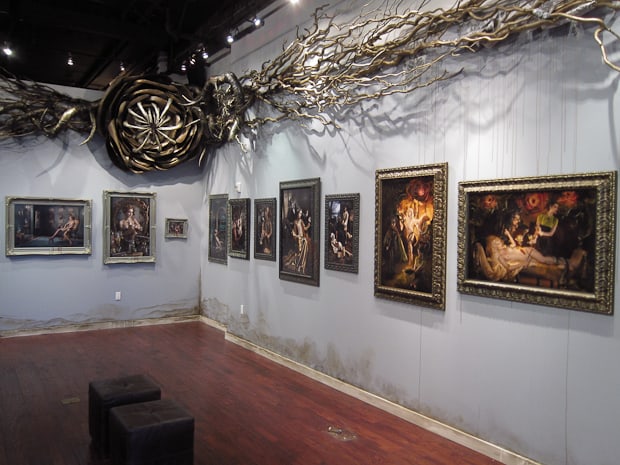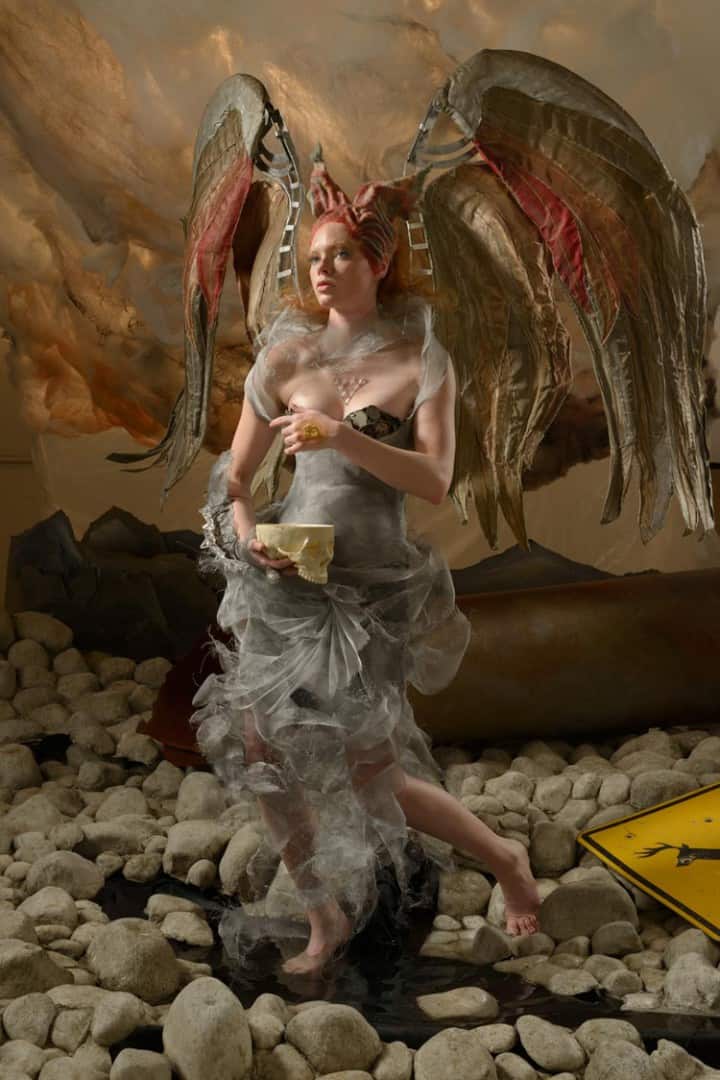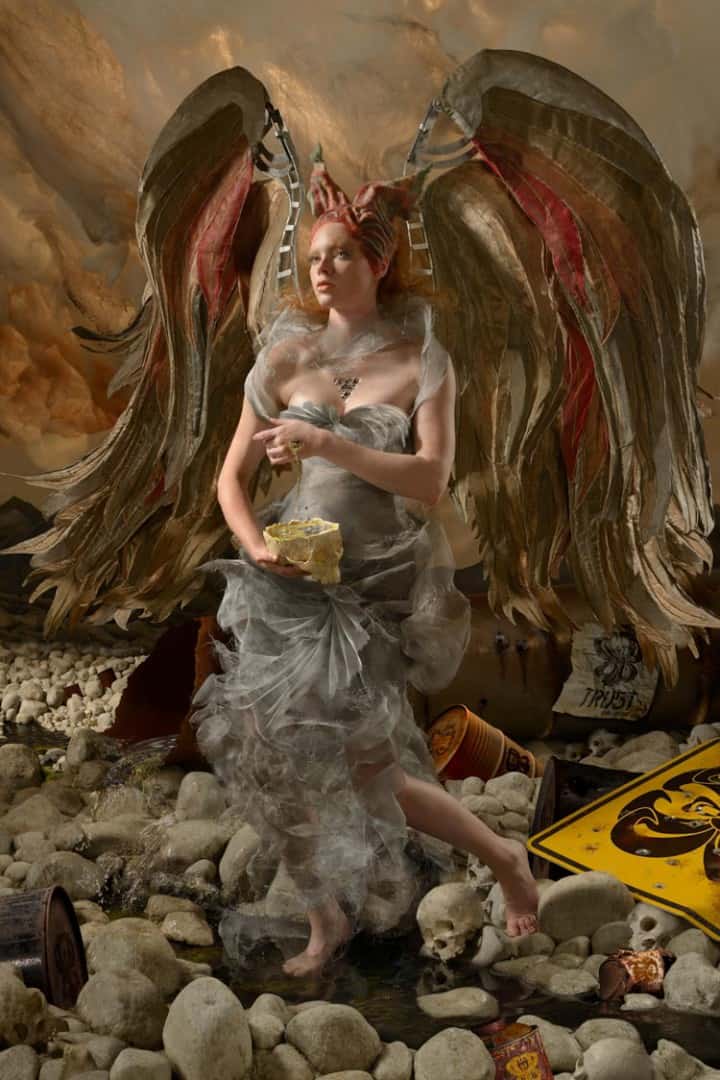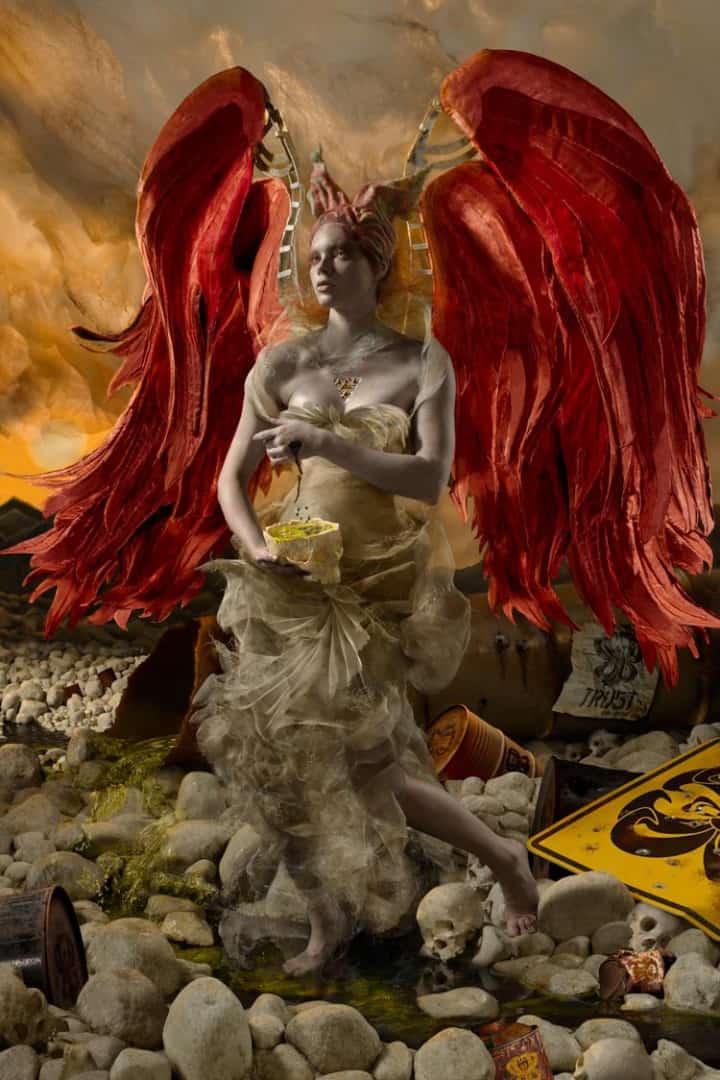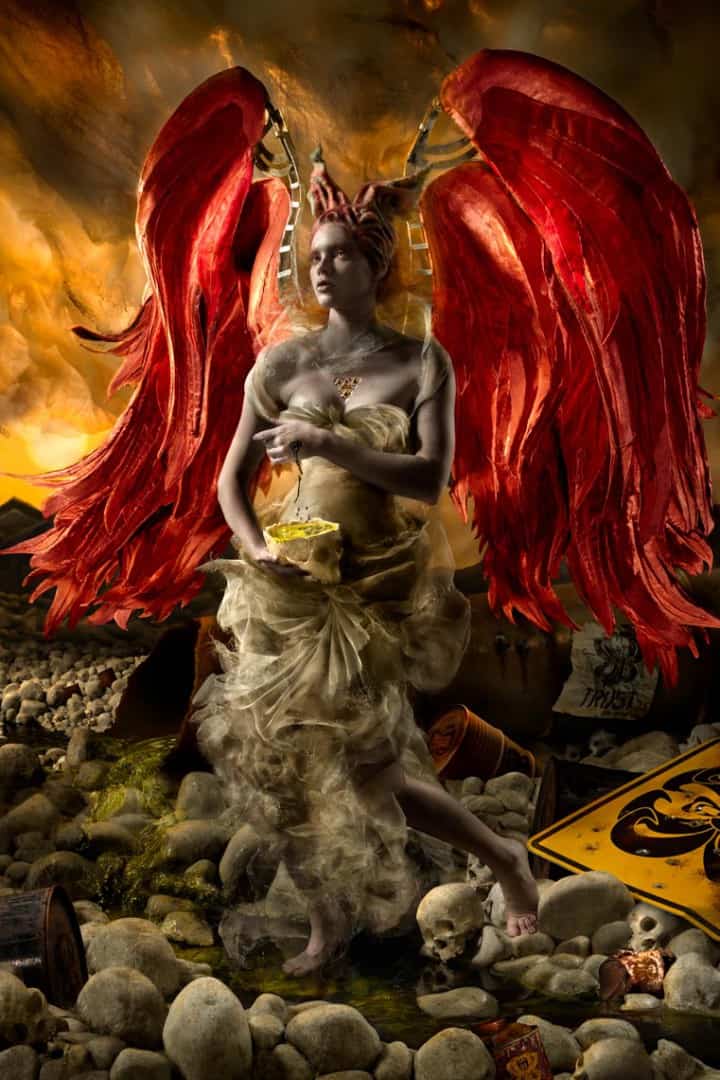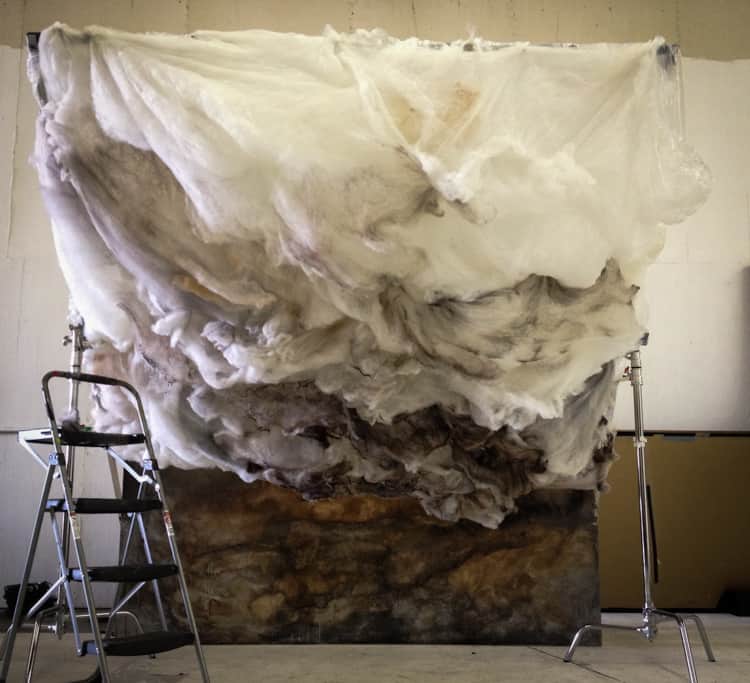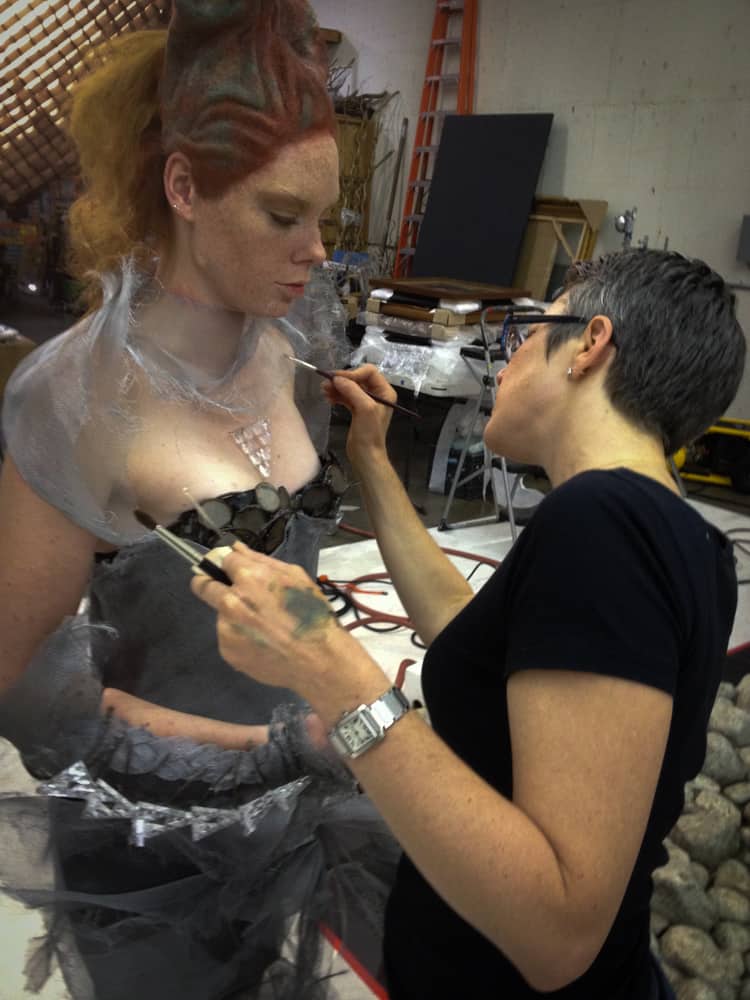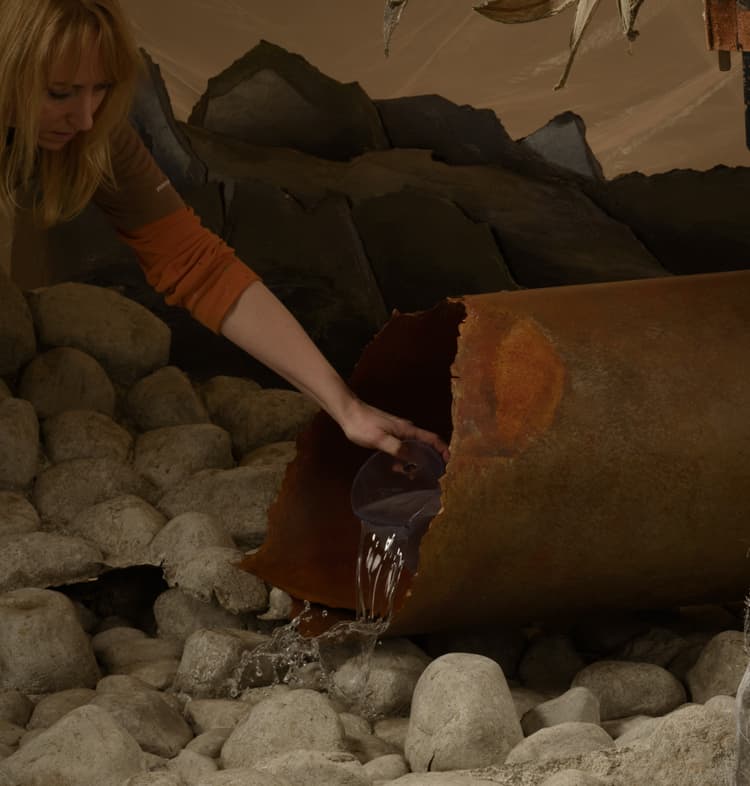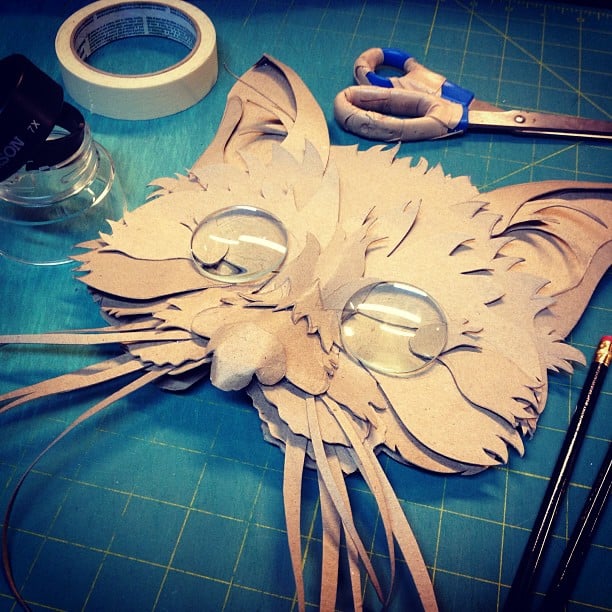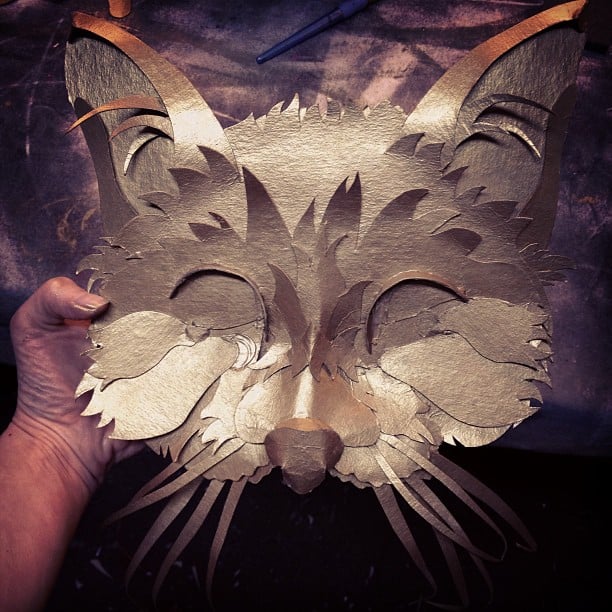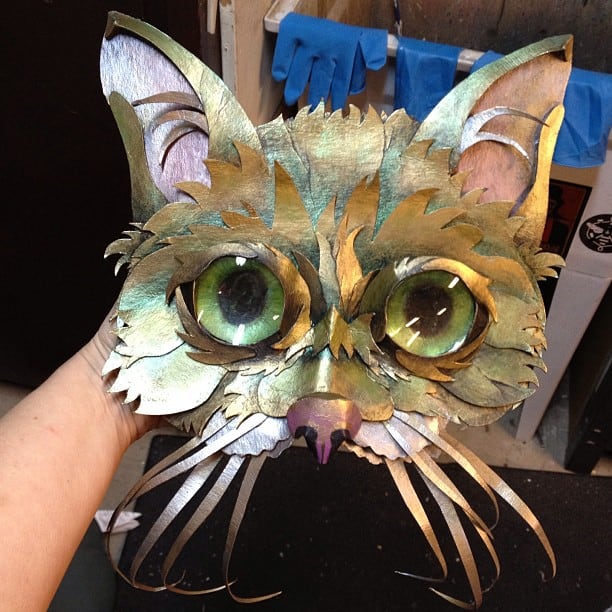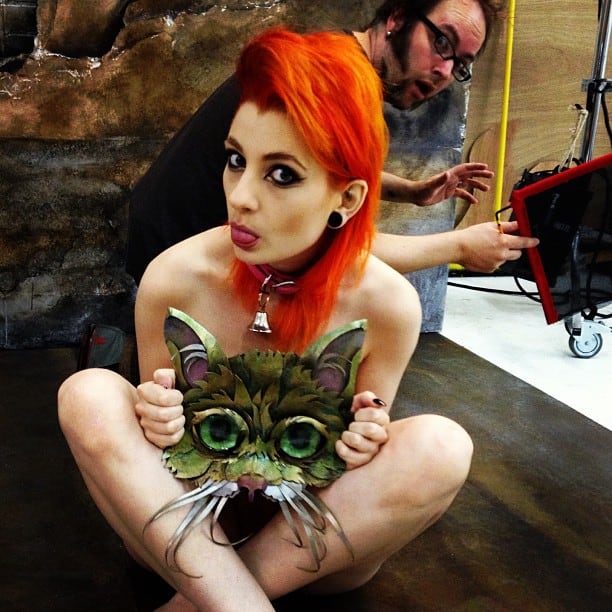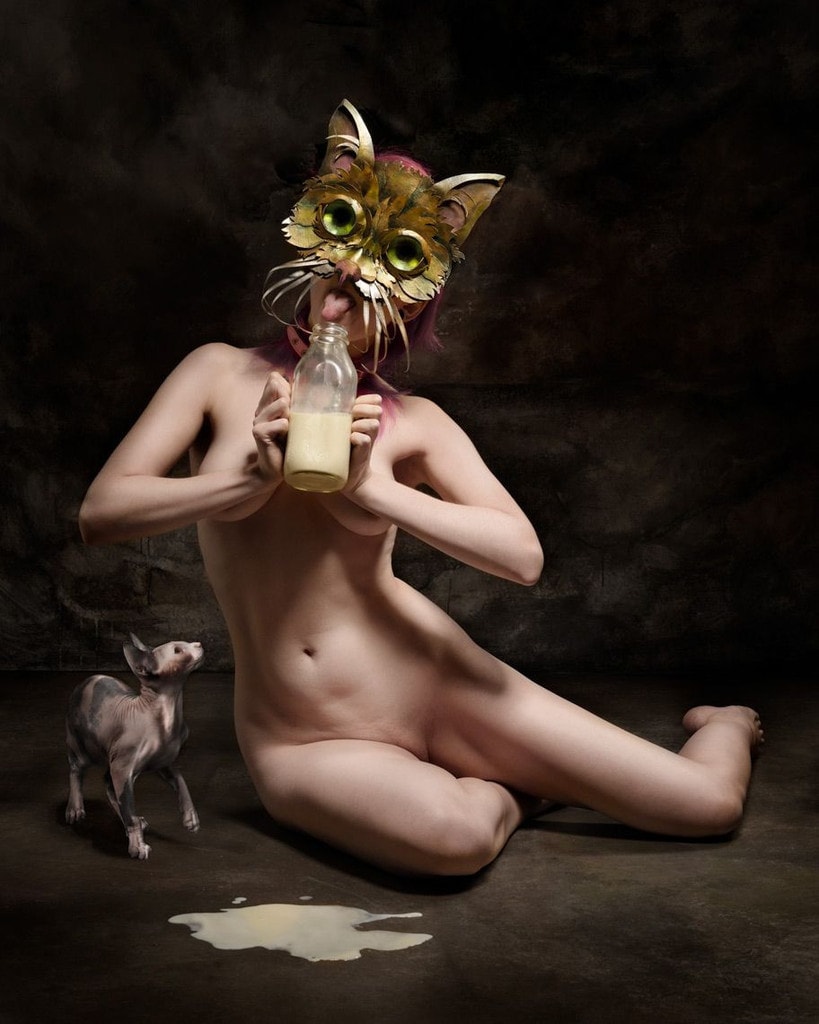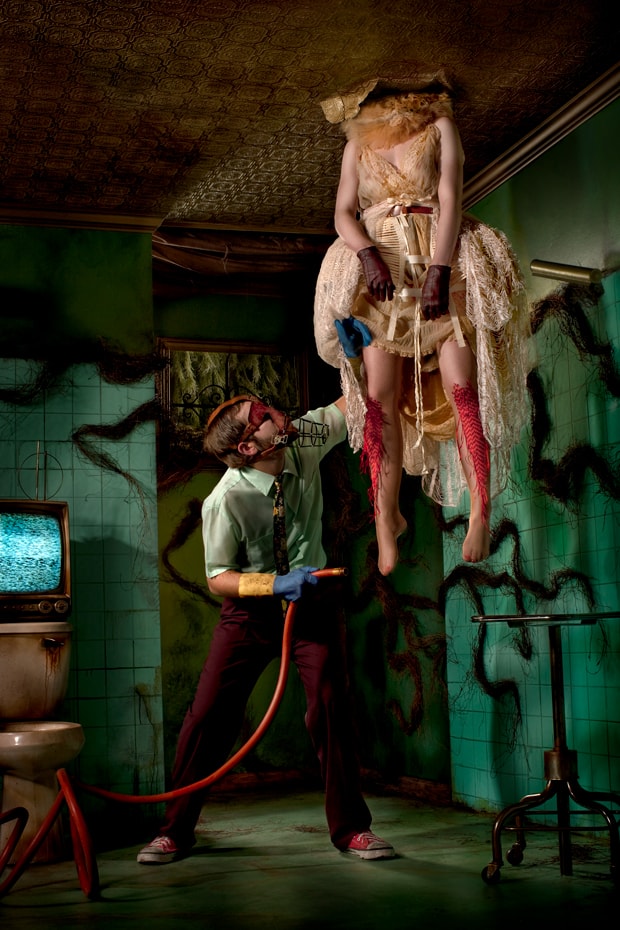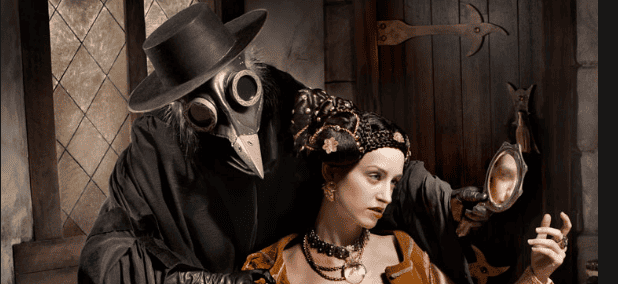
When you first see a piece by Ransom & Mitchell there is a lot to take in. There’s morbid fantasy. Hellish beauty. A magical darkness. Photographs that you can’t believe to be true but they are. It’s all real.
Stacey Ransom and Jason Mitchell create images using practical elements — models, sets, props. But there’s more to them than that. The photographs they create have the time and skill of a feature film behind them. These fully realized worlds have a living history, given life by a talented crew directed by the two-headed beast that is Ransom & Mitchell.
They are also excellent self documentarians and teachers. Through their companion site, Fake Believe they are open and giving of their secrets. Stacey Ransom turns cardboard, glue, and paint into a golden bird. Jason Mitchell lights the set and shoots — together, the bird takes flight.
Whatever it is they imagine they make it real. Their work appears impossible, but I know it is possible because they built it.
There’s magic in those hard-working and dedicated hands.
CJ: What I immediately loved about your work is that they feel like they could be paintings, but instead you’ve created each environment from the ground up. There’s so much attention and craftsmanship put into your work it blows my mind.
Your approach feels very painterly, like an old master. A piece like ‘The Last Good Man – Portrait of Painter Scott Musgrove’ is an amazing feat – anyway you crop that image, or any detail unto itself is a thing of beauty.
When starting a piece like that, what do you start with? Is there a key image for you that holds it all together? You have so much to pull from and be inspired by in his work, do you brainstorm together until you’ve found an approach you’re both happy with?
R&M: For our artist portrait series (like with Scott Musgrove), we are always trying to find the ‘truth’ within. When possible, we conduct an initial interview (by phone or email) with each artist and pick their brains a bit.
From there, we both brainstorm privately to develop a concept. Usually, by the time we present our idea back to the artist, the idea is fairly well developed.
In addition, we usually are very familiar with each artist’s work and we try to infuse their personality and style into the piece. Musgrove was great to work with as he had a really well developed narrative backstory to his work that we could latch on to and expand.
Casting him as a Darwin-like explorer cataloging his creatures, who eventually became the last of his kind was both a personal expression of Musgrove’s work and it was a human condition that was globally recognizable.
Are you sketching before hand at all? With so much going into each image with props, costumes, and make up – is there room for spontaneity? Are last minute changes encouraged, or is there a script that needs to be followed exactly?
For each project, we develop treatments with sketches or mock up photos, reference materials, and the general guidance for each of the elements of the concept.
This makes it easy for us to be on the same page, and clearly communicate with the other crew involved in pulling together the shoot.
But often when we stick too rigidly to an idea is where we get into trouble — and it is from pushing past concepts and leaving ourselves open to ideas and tweaks that we are able to do our best work.
Your piece ‘Vanitas’ has such a gentle balance of the beautiful and the morbid – it has that classic story telling quality that you find in paintings like ‘The Arnolfini Wedding’ by Jan Van Eyck where every detail down the fabric plays a part in the storytelling. The story is told through the mirror, the knife, the cloaked figure.
‘Vanitas’ starts a series that includes ‘Avaritia’ and ‘Nos Fiere Quad Seminat,’ and each tells of the most base of human desires – the desire for beauty, fame, and money. Your work often comes in a series, with an overarching story layered into each image.
Do the stories come first, or are you compiling props and visual ideas and create from something from that? What does it take for you to say, ‘Okay, we’re ready to begin.’
The ‘start’ cue comes when we feel we’ve adequately developed a solid concept and worked out how we will create the appropriate amount of details required to tell the tale. Some concepts will sit on our desk for a very long time, even if they are easy to pull off, because we feel ‘something’ is missing.
Others may suffer from requiring too much production time to warrant pulling the trigger (alas, our productions can be very expensive!). The perfect balance is when we can bring a team together on a single day and shoot the bulk of the materials we need to fully capture a concept.
Most recently we had planned to shoot ‘No Such As What I Want‘ for Kevin Titzer‘s curated show Troublesome Houses. We realize our concept would only require a half day shoot, so we developed ‘It Will Be Ours‘ to take advantage of the unique talents of that same team and flesh out the day.
Photography is an interesting medium – it’s advantage is that it can be immediate and loose. Snapshots to capture an unrehearsed moment. Your approach is much different. There’s a filmmaker’s touch of planning and order, but you don’t deal in moving images, just one single frame packed with beauty, darkness, and imagined history.
‘Wreckage’ feels like the origin of a ghost story. You know that once both women are dead, that home will be haunted forever. The frame is filled with that narrative without it being explicit, at least my interpretation of that piece.
Beyond creating a series of photographs, are their other forms you want to take your storytelling? An illustrated book? A short film? I guess the question really is, does there need to be more? Are you satisfied with telling a story through a single image?
We began working together on independent films and it was on those film sets where we realized our dark tastes and proclivity for telling tales from ‘the other side’ were very mutual (and also somewhat unusual). We also quickly realized, we’d be able to tell far more complex stories through the medium of photography vs film for no other reason than budget.
The money required to fund a low-budget short film that will have very few viewers will equally fund multiple photo concepts which will each have the potential to reach a vast audience. We still shoot short films alongside our still works from time to time, but it’s usually to support the still works, not the other way around.
We do have a few book projects in the que, one of which will be the compilation of our many artist portraits and the behind the scenes making of these images.
You each come from different backgrounds but combined have created a specific way of working, a specific vision. You combine portraiture with illustration and come up with something uniquely your own.
Besides your fine art work you also do advertising. When you’re approached for advertising work, how much control do the agencies give you?
With most commercial projects, they begin as someone else’s idea that we are interpreting.
As a result, they have control over the final concept and therefore the execution. It’s a big collaborative effort upon which we strive to infuse our style while also respectfully ensuring our clients realize their vision.

‘Sir Gruselig von Grab – Memento Mori (Sir Creepy from the Grave – you too will die)’ by Ransom & Mitchell
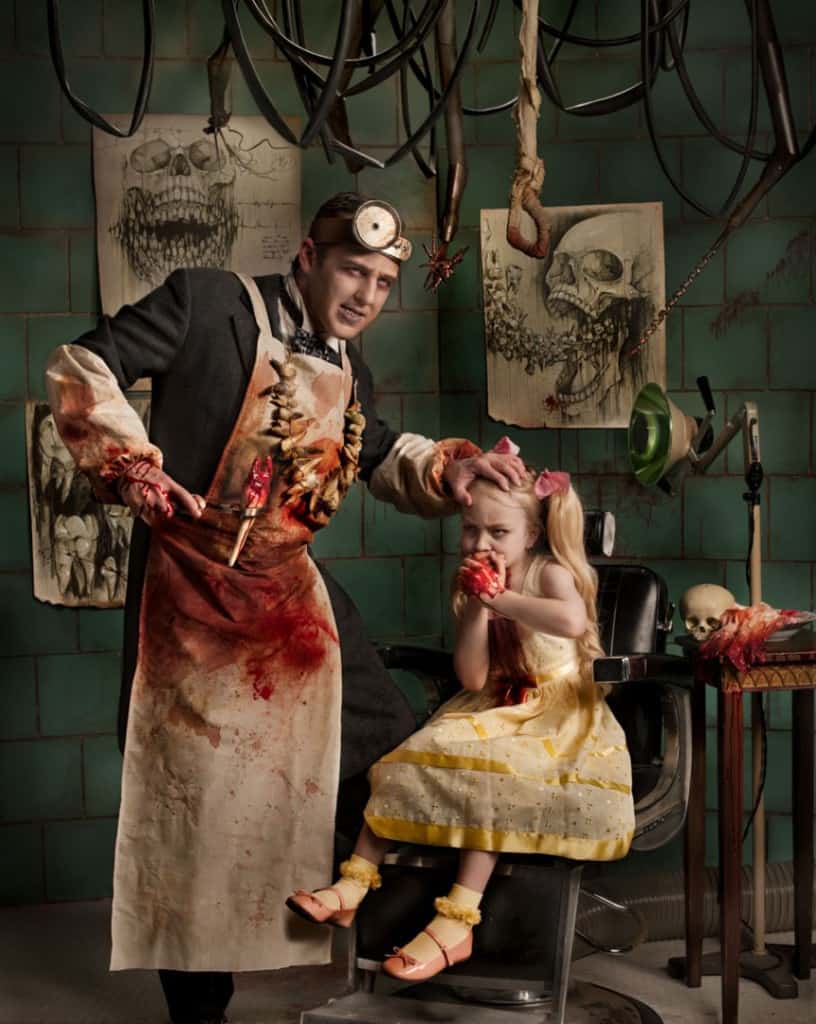
Doktor Schrecken Monstrum und der Kranke (Doctor Horror Monster and the patient)’ by Ransom & Mitchell
The ‘Die Familie’ project is a brilliant combination of surrealist narrative and setting each artist in vivid and insane representations of their work. There are so many minor touches in each portrait, that the more I look the more I find.
In Dave Correia’s portrait ‘Doktor Schrenken Monstrum und der Kranke’, it’s like you’re watching the thought patterns of Correia at work. He’s never painted a scene exactly like what you’ve portrayed, but a lot of what I see as a fan in his work is there. The same can be said for each portrait.
In ‘Meister Tier Verstarken mit dem Motor der Liebe’ featuring artist Robert Bowen, you get the Bowen hallmark elements of decapitated animals, fire, and bright color. The link between them all is your narrative of the family they’re portraying. How did you approach balancing each artist’s style with your own? Did you have any ideas for the portraits that just didn’t work?
Ah, we loved that project! We are friends with all of the players, so it was a real treat to subversively tell their personal stories all under the guise of the fictional NullFreund family.
We did work very hard to developed the concepts around each artist’s styles and subjects consequently, there are many secrets hidden within each image!
We also had a lot of discussion with each artist to get the concepts just right. But they also had to serve the overall arch of the narrative of this family we developed to make the whole of the project stand alone.
Not only did most of the characters have different ideas that we kicked around, there were three or four other people we had wished to incorporate but ultimately didn’t have the time to shoot.
We do feel like the story is open ended, and have we keep the possibility of continuing to develop more of the family.
I’ve seen that at some of your shows you’ll bring in props from the sets to create mini-installations in the gallery. I would love to see a completely immersive Ransom & Mitchell environment. What happens with the sets and props once the shooting is over?
Most of the elements from our sets are taken apart and stored away in their raw state to be used again for future projects. We really like to get the most out of our materials and they work very hard for us.
To that end, things are often designed around what we can get our hands on and disassemble later. The props, which can’t be reused (or are too awesome to take apart) often make their way to our office which is quickly becoming an odd menagerie of the macabre and beautifully bizarre.
On your site ‘Fake Believe’ you share the prop and set making steps that go into your projects. A lot the behind the scenes work shows up on your Instagram feed too. As a fan I love being able to see what goes into making the magic you do. What prompted you to catalog and share your creation process?
We feel like the traditional mentoring process is under a huge transition these days. It is often hard for young artists and hobbyists to find traditional schools and guilds to turn for guidance.
Whereas in the last five years alone, the internet has exploded with websites and blogs devoted to sharing tips, tricks and step-by-step guides.
We have certainly benefited from this free exchange of ideas. We use these resources to research ideas and help develop techniques, so in many ways we feel like we should give back as well.
We also feel that we have a distinct style we’re developing so that even if someone used our same process the end result will be different.
We have also found that candidly sharing our process is a great way to interact with our audience and help to explain our style and motivations.
For more information on the work of Stacey Ransom and Jason Mitchell follow these handy links —
Ransom & Mitchell Dot Com
Stacey Ransom Dot Com
Jason Mitchell Dot Org
Fake-Believe
Ransom Notes
Ransom & Mitchell Interview by Hi-Fructose Magazine
